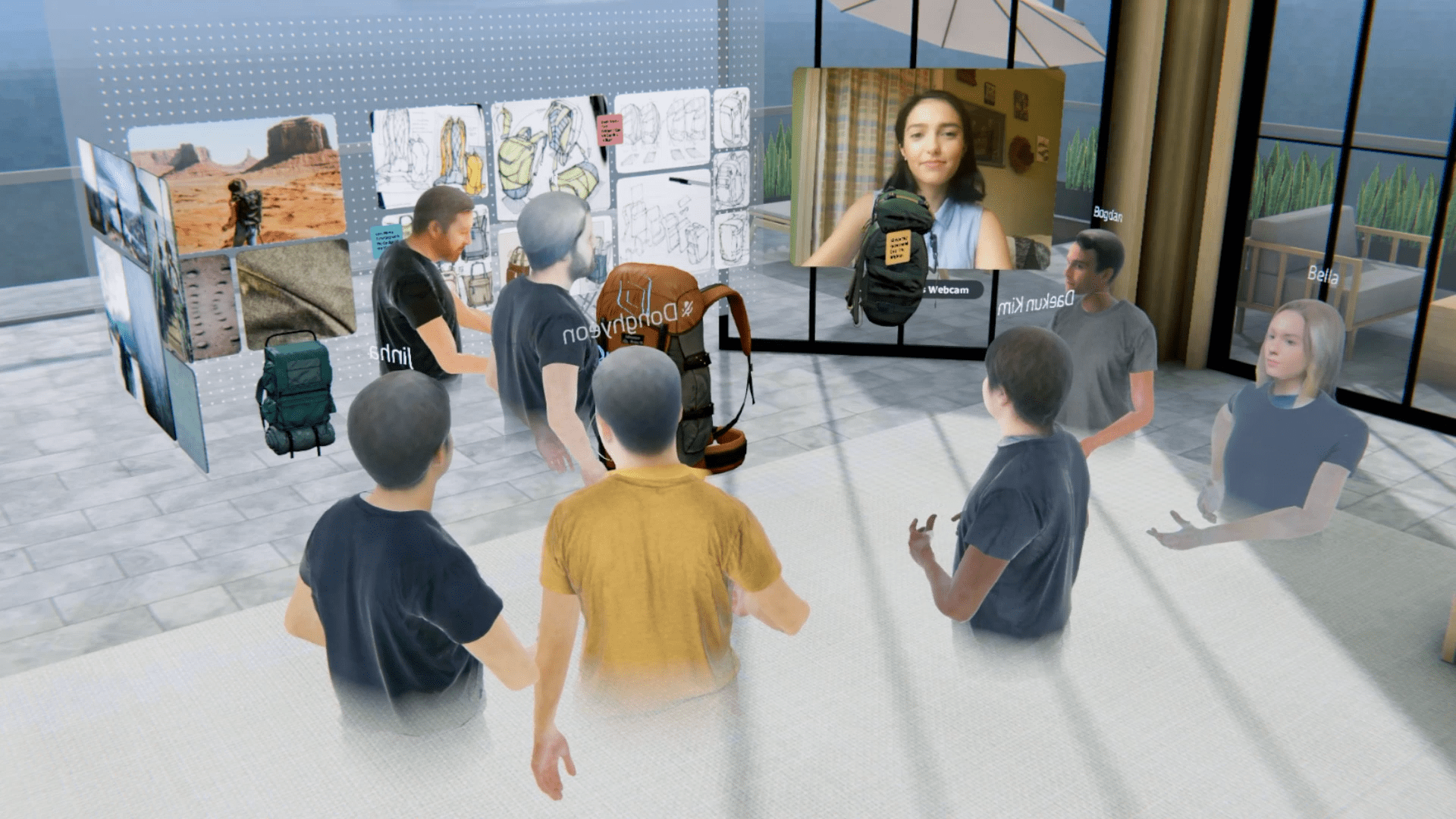
Employee avatars take part in a virtual meeting using VR company Spatial’s platform.
Spatial
The future of work may look a lot like science fiction in a few years as advances in augmented and virtual reality as well as 5G and 6G wireless technologies revolutionize the way we interact with one another digitally.
That is the prediction of Paul Jacobs, former CEO and executive chairman of Qualcomm who co-founded XCOM Labs two years ago along with other former Qualcomm top executives to develop and commercialize transformative wireless technologies. He is now XCOM’s chairman and CEO.
A prolific inventor with over 80 U.S. patents granted or pending in the field of wireless technology and devices, the electrical and computer science engineer shared his vision at CNBC’s virtual @Work Spotlight event, “Leveraging New Technologies to Optimize the Workforce” on Thursday.
“I think workforces will adopt hybrid models where some people will be at the office live in-person, and others will be working remotely. Eventually we will be able to use augmented and virtual reality to improve the way we interact with one another in the workplace virtually,” he said, noting it will help humanize the remote work experience.
“Already people are asking do we want to just be on Zoom staring at a big screen with a matrix of people’s faces on it, or are their opportunities to use technologies to make the experience better?,” he said.
According to Jacobs, “We can use some of these new technologies to make it feel like you are there with coworkers by creating a digital twin of oneself, an avatar, or a video feed of them in the right location.”
Collaboration effects in the virtual world should also evolve into a new normal, he said. It may be that digital objects a team is working on together float in the air in front of the group, he added.
“Some of these things seem like science fiction but the technologies behind many of these concepts already exist. The questions are: ‘How socially acceptable are they now? And how good is the current experience?'”Jacobs said.
“The VR headsets are getting better and they are becoming cheaper but we still need to make them more lighter and more efficient. Now the highest end VR set takes a gigabit per second to drive, but in the near-term hundreds of megabits per second will be needed to solve this issue.”
@daphneemarie | Twenty20
Hopefully, within 10 years there will be a sea change, Jacobs predicted as the nature of work changes dramatically. We are in the learning stage now, he explained.
The pandemic is driving the adoption of these technologies and that trend is expected to continue throughout the decade. A PwC report last year predicted that nearly 23.5 million jobs worldwide would be using AR and VR by 2030 for training, work meetings or to provide better customer service.
According to a report by ABI Research this year, before the pandemic the VR market was forecasted to grow at a 45.7% compound annual rate, surpassing $24.5 billion in revenue by 2024. Virtual reality used within businesses is forecasted to grow from $829 million in 2018 to $4.26 billion in 2023, reports ARtillery Intelligence.
“Many companies have jumped into the space including Apple and Google,” Jacob noted. “It’s an exciting time.”
“Maybe the same thing that happened to the smartphone where Apple’s introduction of the iPhone helped tip it over into the mainstream will happen here,” he said. “Everyone is talking about Apple working on their own augmented reality initiative.”
Apple has the world’s largest AR platform, with hundreds of millions of AR‑enabled devices, as well as thousands of AR apps on the App Store. In May, Apple purchased virtual reality company NextVR. The Newport Beach, California start-up previously focused on broadcasting and producing live and recorded events in virtual reality, like sporting events and concerts. It is further evidence of Apple’s plans to enter virtual reality and related augmented reality technologies as a new product category. It has been previously reported that the company is secretly working on a combination of AR and VR wearables.




